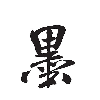
储能用介电复合材料研究进展(英文版)Development of Dielectric Composites for Dielectric and Energy Storage Applications
批量上传,套装书可能不全,下单前咨询在线客服! 正版书 !!!
¥ 46.63 6.9折 ¥ 68 全新
库存3件
作者同阳
出版社知识产权出版社
ISBN9787513067096
出版时间2019-12
装帧平装
开本16开
定价68元
货号28985795
上书时间2024-10-19
- 最新上架
商品详情
- 品相描述:全新
- 商品描述
-
前言
Preface
Dielectrics, which are materials responding to an external electric field with a polarization, have been widely used in industries.Dielectrics with high permittivity and high breakdown strength are
required for the applications including high charge capacitors and energy storage devices, where the dielectric composites could found their position as the potential candidates. As the commonly used matrix for dielectric composite, glasses and polymers exhibit high breakdown strength, but small permittivity. To increase the permittivity and energy storage density, a great deal of effort has gone into developing the high breakdown strength matrix filled with high permittivity ceramics or conductive materials to create new types of dielectrics that is easier to
process while maintaining useful dielectric properties.
For the purpose of getting the optimized composites for dielectric and energy storage applications, both polymer based and glass based composites were fabricated and studied in the research. By the using of different matrix and fillers and optimization of fabrication process, the
dielectric composites with excellent performances were obtained.
According to the analysis of the data from testing, these composites were proved to be the potential candidates for the applications including high charge capacitors, energy storage device and even wearable electronics.
For the purpose of effectively increase dielectric constant, conductorpolymer was firstly introduced as potential dielectric composites. In this part of research, the 2-D conductors was used as the filler due to its high conductivity and polar polymers was used as the matrix because of the relatively good permittivity and high breakdown strength. It was found that although the increase of dielectric constant by combining 2-D conductive fillers and polymer matrix was proved by previous studies, the application of the composites is still limited by the high loss and low breakdown strength. Therefore, ceramic-polymer dielectric composites were studied as the secondary part of the research to create a composite with high energy and low loss. In both conductor- polymer and ceramic-polymer composites, methods including solution casting, hot
pressing and silicon coupling agent was used in the preparation of polymer-based composites. In the tertiary part of research, the focus points was turned to the detailed studies glass based dielectric composites due to the fact that the type of materials have the ability to keep the balance between high permittivity and energy storage density.
The varieties of nanopowders were studied in making composite pellets by conventional sintering under different conditions, such as molding pressure, sintering temperature, and ceramic powder size. By summarize the results, several conclusions about processing effects were obtained.
The Chapter 1, 2, 3 and 5 of this book was edited by Dr. Yang Tong from Taiyuan University of Science and Technology; the Chapter 4 of this book was cooperatively edited by Mr. Dong Zhang, Mr. Dengyu Zhang, Mr. Zechen Li, Mr. Jun cai Yu from Beijing Institute of Aerospace System Engineering, and Mr. Lei Han, Mr. Yu Cao from Tianjin Long March Launch Vehicle Manufacturing Co. Ltd.
This book was sponsored by the Fund of Shanxi Key Subjects Construction, the Key Laboratory of Magnetic and Electric Functional Materials and Applications in Shanxi Province, Institute of Magnetic Material Engineering and Adcanced Materials, Key Innovation Centre of "1331" Project in Shanxi Province for Magnetoelectronic Materials and Devices, Heavy Machinery Engineering Research Center of the Ministry of Education, Collaborative Innovation Centre of Taiyuan Heavy Machinery Equipment, Shanxi Provincial Key Laboratory of Metallurgical Device Design Theory and Technology, and the works relevant to this book were supported by the Taiyuan University of Science and Technology Scientific Research Initial Funding (20182028), Doctoral Starting Foundation of Shanxi Province (20192006), Science and Technology Major Project of Shanxi Province (MC2016-01), National Natural Science Foundation of China (Grant No. 51731003), and Project U610256 supported by National Natural Science Foundation of China.Yang Tong
September 10th, 2019
Development of Dielectric Composites for Dielectric and Energy Storage Applications
导语摘要本书系统地介绍了介电复合材料的制备、表征及性能,并在此基础上总结复合材料的介电理论,揭示复合材料结构影响性能的机理。本书可作为高等院校及科研院所材料等专业科研人员对介电复合材料开展研究工作的参考,对从事介电材料生产与应用单位的工程师和管理工作者具有指导作用。
作者简介同阳,男,1988年6月生。博士研究生学历,学历毕业于美国奥本大学。2017年12月博士毕业后在奥本大学任博士后至2018年6月,博士后任职结束后回国,任职于太原科技大学。主要研究方向为介电材料的制备与表征,熟悉聚合物基材料、陶瓷基材料的制备及性能表征方法,尤其擅长复合材料的研究,通晓材料介电性能的主要理论,善于汇总数据、理论分析,精通于使用各种表征仪器。
目录C o n t e n t s
Chapter 1 Introduction and Research Objectives ··········· 1
1.1 Theory of Dielectric Materials ··································· 2
1.1.1 Permittivity ··················································· 2
1.1.2 Dielectric Loss ··············································· 4
1.1.3 Relaxation····················································· 6
1.2 Classification of Dielectric Materials ··························· 8
1.2.1 Non Polar Materials·········································· 9
1.2.2 Polar Materials ··············································· 9
1.3 Application of Dielectrics ······································· 12
1.3.1 High/Low Permittivity······································ 12
1.3.2 Energy Storage ·············································· 13
1.3.3 Wearable Electronics ······································· 17
1.4 Dielectric Composites ··········································· 18
1.4.1 General Concepts of Composites ·························· 18
1.4.2 Flexible Polymer-Based Dielectric Composites ········· 20
1.4.3 Ceramic-Glass Dielectric Composites ············&mi
相关推荐
-

储能用介电复合材料研究进展
全新保定
¥ 36.04
-

储能用介电复合材料研究进展
全新保定
¥ 34.00
-

储能用介电复合材料研究进展9787513067096
全新保定
¥ 36.70
-

储能用介电复合材料研究进展(英文版)
全新成都
¥ 48.73
-

储能用介电复合材料研究进展(英文版)
全新广州
¥ 43.35
-

储能用介电复合材料研究进展(英文版)
全新广州
¥ 41.35
-

储能用介电复合材料研究进展(英文版)
全新广州
¥ 43.35
-

储能用介电复合材料研究进展(英文版)
全新广州
¥ 46.76
-

储能用介电复合材料研究进展(英文版)
全新广州
¥ 41.35
-

储能用介电复合材料研究进展(英文版)
全新天津
¥ 43.85
— 没有更多了 —












以下为对购买帮助不大的评价